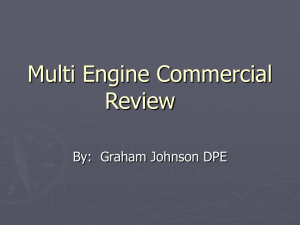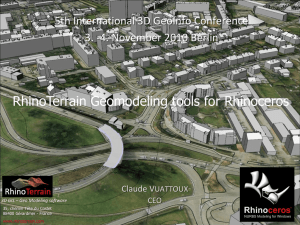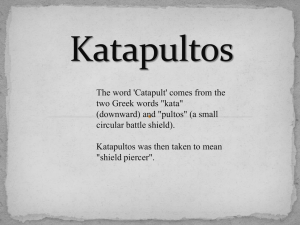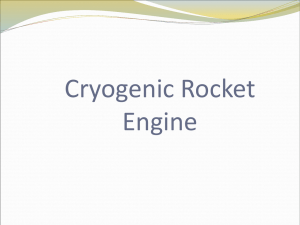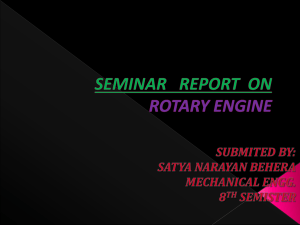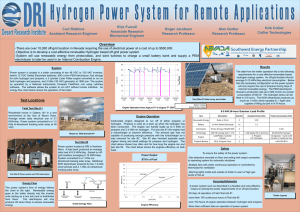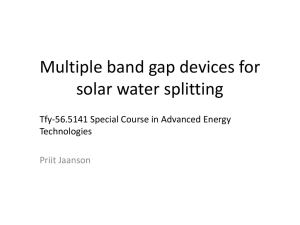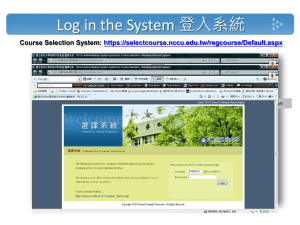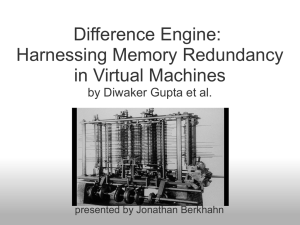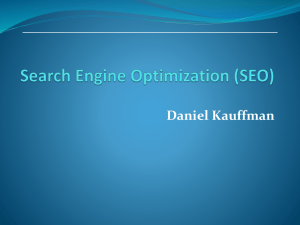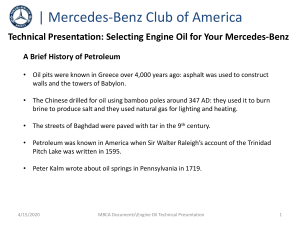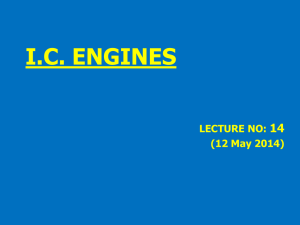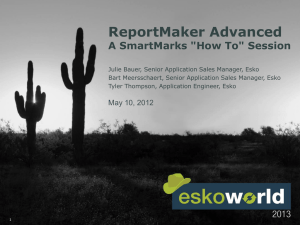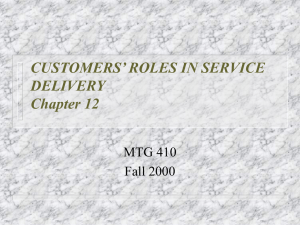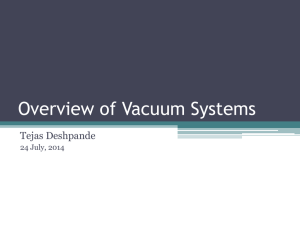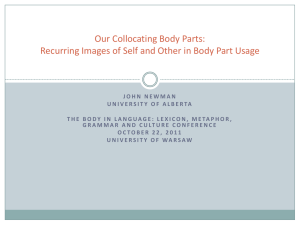The water engine
advertisement
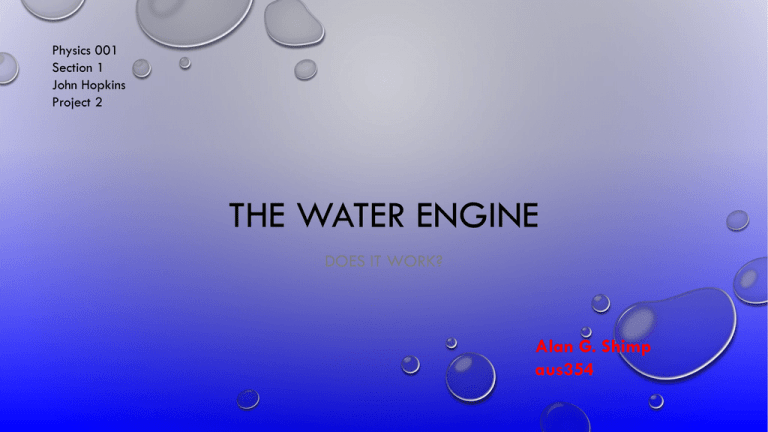
Physics 001 Section 1 John Hopkins Project 2 THE WATER ENGINE DOES IT WORK? Alan G. Shimp aus354 WHAT IS A WATER ENGINE? Broadly defined, a water engine is a device that is fueled by water and produces energy. Purportedly, the engine can either use naturally running water, or the water can be broken into its component elements, hydrogen and oxygen, for fuel. Three quarters of the Earth’s surface is covered in water, and while water can be hard to come by in some places, it is still a feasible resource. It makes sense that scientists would pursue it as a source of energy. WATER POWER One of the oldest forms of a water engine is the water wheel. It dates back at least to the ancient Romans. Comprised of a series of gears, wheels, and belts, the water wheel was used to power grist mills and many other sorts of machines until the introduction of steam power (“Water Wheels”). Of course, water wheels were not portable. But using water to deliver electricity to remote areas is quite feasible. Two shining examples of this are the Hoover Dam and Niagara Falls. It is also possible to harness the ocean tides to create power. Tidal generators are large underwater turbines that are designed to capture the kinetic motion of the ebbing and flowing of ocean tides in order to create electricity. The turbines are driven by the power of the tides in both directions, when the tide comes in and again when it goes out. This is an expensive but highly efficient means of obtaining energy. On the negative side it’s location specific, as well as intermittent, and has a detrimental impact on the local environment. Water Wheel – Wikimedia Commons Hoover Dam – Wikimedia Commons Niagra Falls (“Wyndham Garden Niagara Falls Fallsview”) Tidal Turbine - (“Tidal Power”) SELF-ACTING PUMPS There are two types of portable water engines, neither of which is a genuinely feasible option. The first is a self-acting pump. It works by looping water from a starting point, through a predetermined circuit, and back to its point of origin. This is a sort of perpetual motion machine, and by the laws of thermodynamics it’s not sustainable. Left on its own, such an engine would eventually stop due to entropy, and certainly couldn’t power another device. Nonetheless there have been many variations of this attempted throughout history. One of the earliest was conceived by Archimedes (“Perpetual Futility”). Da Vinci’s Self-Acting Pump - (“Perpetual Futility”) Archimedian Screw and Variation - (“Self-Acting Pumps”) Lift Pump – (“Self-Acting Pumps”) William G. Hinkley’s Portable Electricity Generating Gravity Driven Wheel System – (“Self-Acting Pumps”) HYDROLYSIS-BASED ENGINES The second type of portable water engine is a hydrolysis-based engine, which breaks water into its component elements, hydrogen and oxygen, for fuel. Water is one part oxygen and two parts hydrogen. Hydrogen is highly combustible and can be used as fuel. However, removing the hydrogen from the water requires more energy than is produced by the hydrogen itself. Electrolysis uses an electrical charge to dissociate the components of water into hydrogen gas (H2) and oxygen gas (O2) (“electrolysis of water”). It’s worth noting that the energy does not really come from the hydrogen but rather the electricity; the hydrogen is merely a means of transporting the energy. There are numerous problems with hydrogen fuel cells. They are big, expensive, dangerous, require an extensive infrastructure for refueling, do not work in cold weather, and still require the use of another energy source for the electrolysis. Other than that, they’re a great idea. Many people have claimed to create an engine that is so efficient that the hydrogen released from the electrolysis is capable of fueling the electrolysis process itself. This of course is just another attempt at a perpetual motion machine (“Debunking Stanley Meyer’s Claims”). HAS THERE EVER BEEN A WATER ENGINE? One intriguing question is whether proponents of these sorts of water engines are charlatans or merely misguided. In David Mamet’s play, “The Water Engine” a man earnestly believes he has created a water engine and soon others attempt to cheat him and threaten his life in order to obtain his invention (Mamet). In real life, a man named Stanley Meyer garnered attention (perhaps too much attention) when he claimed to have invented a water engine. Meyer created his “water fuel cell” in 1973, and claimed that he had an additive that would make separating the hydrogen and oxygen more efficient. Supposedly the energy produced would then be sufficient to run the engine, thus powering further electrolysis. He acquired several investors for the project before being exposed as a fraud. Later, while discussing the engine with two potential investors over dinner, he ran out of the restaurant shouting that he’d been poisoned. An autopsy revealed that he’d had a cerebral aneurysm. Nonetheless, some conspiracy theorists still believe, much like in David Mamet’s play, Meyer was poisoned by big energy companies or the government in an attempt to cover up his discovery as it threatened the status quo. In truth, Meyer was probably a charlatan and not simply misguided (“debunking Stanley Meyer’s claims”). WILL THERE EVER BE A WATER ENGINE? Could there ever be a water engine? While water powered generators are in use every day, an engine deriving its energy from water is surely an impossibility, because it would contradict the laws of thermodynamics. There will never be a water engine. WORKS CITED • “Electrolysis of Water.” Hyperphysics. n.p., n.d. Web. 3/26/2014 <http://hyperphysics.Phy-astr.Gsu.Edu/hbase/thermo/electrol.Html> • “Debunking Stanley Meyer’s Claims.” The aardvark. Bruce Simpson/aardvark, 7/1/2008. Web. 3/26/2014 <http://www.Aardvark.Co.Nz/stanley_meyer.Shtml> • “Perpetual Futility.” Lock haven university. Lock Haven University, n.d. Web. 3/26/2014 <https://www.Lhup.Edu/~dsimanek/museum/people/people.Htm> • “Wyndham Garden Niagara Falls Fallsview.” Wyndham. Wyndham Hotels and Resorts, n.d. Web. 4/11/2014 <HTTP://WWW.WYNDHAM.COM/HOTELS/ONTARIO/NIAGARAFALLS/WYNDHAM-GARDEN-NIAGARA-FALLS-FALLSVIEW/HOTEL-OVERVIEW> • “Self-Acting Pumps.” Lock Haven University. Lock Haven University, n.d. Web. 4/11/2014 <HTTPS://WWW.LHUP.EDU/~DSIMANEK/MUSEUM/THEMES/PUMPS.HTM> • “Tidal Power.” Alternative Energy News. n.p., n.d. Web. 4/11/2014 <HTTP://WWW.ALTERNATIVE-ENERGY-NEWS.INFO/TECHNOLOGY/HYDRO/TIDAL-POWER/> • Mamet, David. The Water Engine ; An American Fable : Two Plays. New York: Grove Press, 1978. Print. • “Tidal Power: Pros and Cons.” TriplePundit. n.p., 6/1/2012. Web. 4/15/2014 <HTTP://WWW.TRIPLEPUNDIT.COM/2012/06/TIDAL-POWER-PROS-CONS/> • “Honda is Working on Hydrogen Technology that will Generate Power Inside your Car.” Business Insider. n.p., 11/22/2013. Web. 4/15/2014 <HTTP://WWW.BUSINESSINSIDER.COM/HONDAHYDROGEN-FUEL-CELL-CAR-FUTURE-LA-AUTO-SHOW-2013-11> • “Water Wheels.” Water History. USBR, n.d. Web. 4/17/2014 <http://www.waterhistory.org/histories/waterwheels/>
